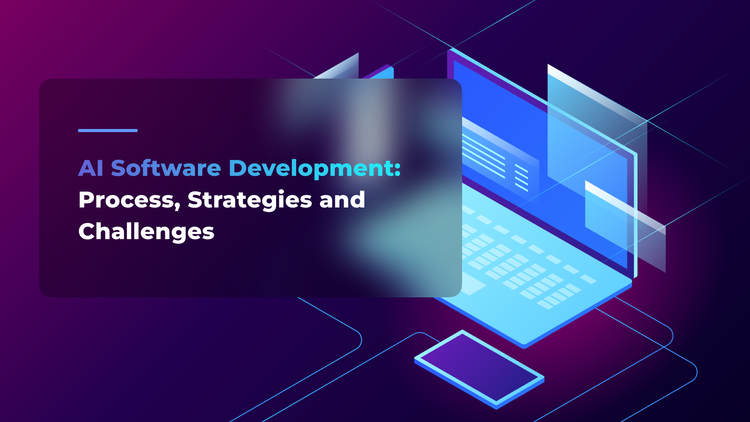Boosting Revenue in Roaming Telecom with Tailor-Made BI Solutions for Data Analytics

The roaming business traditionally evolves around agreements between partners: telecom operators continuously seek the most profitable commitments for managing international traffic usage. Business profit depends on favorable partnerships that create win-win situations for both parties and boost revenue and customer satisfaction.
To operate big amounts of historical data and efficiently analyze it, roaming operators invest in the latest tech, adopting BI systems such as Power BI, Tableau, Qlik and Jaspersoft. Still, the decision-making process itself is often conducted with the help of a traditional tool – Excel spreadsheets which are not fit for long-term decision-making. It is too time-consuming to find the most profitable commitments from the large amount of data that comes from different sources.
Current telecom analytics systems also have some limitations. For example, some software can do data analysis but doesn’t allow comparing forecasts for the following year based on the changes in roaming agreements.
So, how can you facilitate the roaming analytics and get access to the key insights? A centralized financial planning, budgeting, and reporting system is needed that would demonstrate every essential element – volume, charge, rate – in a way simple to analyze and compare.
At Flyaps, we've built such a system for one of our clients, a provider of global roaming services. In this article, we'll share some of our insights on how to implement a single flexible online platform to facilitate data-driven decision-making for roaming providers.
But first, let's define what such a system should offer to telecom providers. That is, what specific insights are roaming providers seeking?
From cloud migration to telecom-specific AI solutions, we have delivered over 20 projects that are used by hundreds of MNOs and telecom companies worldwide. Check our capabilities and let’s discuss your next solution.
See our servicesWhat insights do roaming operators need for financial planning?
The system that can streamline the data analysis needs to give clear visibility into profit and loss drivers, reduce time-to-insight, and create an all-important single version of the truth that would facilitate on-demand insights across the organization. To make it possible, all the key information has to be demonstrated on a single screen, making data comparison straightforward. What data is essential for enhanced financial planning in roaming?
The most profitable service types
First of all, it’s crucial to focus on a specific service type that brings higher revenue while incurring lower expenses. By analyzing charges, volume, and rates associated with various service categories such as voice calls, SMS, VoLTE and data usage telecom companies can define the most profitable service type at any given moment.
This data provides valuable insights for selecting the right partners and negotiating more beneficial discount agreements. For example, let's imagine a telecom provider observes a growing trend among its subscribers to use messaging services, such as instant messaging apps. Based on this observation, the provider can strategically negotiate discounted rates for data usage, driving revenue growth and encouraging increased data usage among customers. This data-driven approach enables telecom providers to align their offerings with customer preferences and capitalize on the most profitable service types.
Traffic distribution among operators
By analyzing traffic distribution within a particular country, telecom providers can identify the most profitable partners. This enables them to ensure that their subscribers connect with the operator that handles the majority of the traffic, leading to enhanced profitability and customer satisfaction.
Country share provides insights into the percentage of traffic usage attributed to each operator, which helps to predict the potential profit from making a deal with that operator.
Inter-operator tariff rate and how it impacts profits
Inter-Operator Tariff (IOT), the wholesale rates between two roaming partners, has to be easy to access and understand. The inter-operator tariff rate plays a crucial role in determining the costs incurred by a telecom company for using another operator's network. This rate directly affects the expenses and competitiveness of the operator, ultimately impacting its profits.
Expected traffic volume
To determine the appropriate discount size, you have to consider the traffic volume. Historical data obtained from data clearing houses provide insights into users' past traffic consumption. By leveraging this data, telecom providers can predict future traffic volume and make informed decisions regarding discount allocation. This approach helps optimize discount strategies based on anticipated traffic patterns.
Forecast on revenue and cost
The essential data includes the price for a traffic unit that allows you to see the eventual revenue and expenses. Divided into inbound and outbound revenue and cost, it lets financial managers see the net profit of the roaming services and take action based on the actual results.
Current discount agreements
Discount agreements also play a crucial role in financial planning, directly influencing the profit of the telecom enterprise. Companies constantly make discount agreements with each other in order to get beneficial commitments and as a result better profit. To efficiently plan future operations, it’s important to see and consider all existing agreements. Based on forecasted traffic, a manager can see what current agreements can be continued in the following years and whether it makes sense to re-negotiate some commitments.
Now that we’ve defined the key elements of roaming financial planning, the main question is how to effectively combine all the data into one system, enabling straightforward analytics. This requires the integration of diverse data sources, intuitive data visualization, and a robust architecture capable of handling large volumes of data.
How to implement a centralized financial planning system
A single system that can show complex data in a simple form needs to integrate all the data sources so users can avoid switching between systems. Combining all the data into one intuitive dashboard takes several steps.
Data mapping: Integrating data from different sources
Roaming analytics relies on the collection and analysis of large amounts of historical data, which requires a combination of several data sources, each with its unique specifics. For example, the data clearing house systems provide crucial info on traffic that is essential for making accurate forecasts.
Traditionally, telecom providers have relied on a combination of third-party business intelligence (BI) systems, Excel spreadsheets for data collection, and existing (often legacy) software. Considering the importance of data sources, it is crucial to enable seamless integration with each of them, ensuring a smooth data flow.
Two approaches are usually leveraged to increase the efficiency of data consolidation from diverse sources and build a centralized system: hybrid cloud and distributed architecture.
The hybrid cloud approach allows for interconnectivity between the company's servers hosting the legacy systems and the cloud-based system itself. Distributed architecture, on the other hand, allows for data mapping to be spread across multiple locations, enhancing redundancy and fault tolerance.
The first integration priority is Excel, as its functionality plays a vital role in numerous processes. The goal is not to replace Excel, but to integrate it smoothly so that data can be exported and used seamlessly within the system.
It is a good idea to design a solution open for integration with other systems by having a public API that provides access to data. It opens the possibility of integration with BI tools like Power BI, Tableau, Qlik, and Jaspersoft. So the next step is to give your system access to a BI tool through an API to pull data automatically.
Connecting all data sources into one system, we can enable enhanced data analysis by adding an advanced calculation engine with different models support on the board. This is where leveraging modern AI development platforms can significantly enhance the system’s capabilities, enabling automation, predictive analytics, and intelligent decision-making at scale.
By integrating all systems in one place, telecom providers can save money on data mining and leverage enhanced data analysis tools - including AI solutions - to gain valuable insights.
Enhancing performance with event-driven architecture
Dashboard merges the data from different sources that can be hard to sync. The combination of multiple data sources often results in a high volume of simultaneous events, which can lead to performance issues and data inconsistencies. To solve this challenge, you need to enhance performance and ensure that all the information is up-to-date.
The proven approach to address these challenges is event-driven architecture. By adopting EDA, the events can be processed asynchronously. Instead of relying on synchronous, request-response interactions, the system can handle events in real-time as they occur. When something happens, the system gets new data, it is automatically sent to a queue, and then to the database itself. This is how the system stays updated, reducing bottlenecks and improving overall performance.
Event-driven architecture also facilitates seamless integration with various external systems by establishing a common format for event exchange. This flexibility allows the system to adapt and seamlessly integrate with new technologies and services, resulting in improved performance and expanded functionality.
Crafting a user-friendly design
Once efficient data integration and performance have been achieved, accessing vast amounts of data becomes possible. But working with excessive datasets presents a major challenge if the design isn’t optimized for specific tasks.
Telecom managers and negotiators often work with forecast rules and discount parameters inside agreements, setting up rules and changing parameters. Entering the correct input is a daily task that has to be fast and straightforward, but not-optimized UX blocks the process, making it time-consuming. So our first goal is to optimize the data input process.
As we achieved smooth data entering, the next challenge is to present this data in a simplified and easy-to-get manner. The goal is to display all the relevant information on a single page while also ensuring scalability for future growth and expansion.
The challenge of data visualization can be addressed with user-centric front-end development. By prioritizing user needs and design thinking principles, you'll be able to present all the data in a simple-to-digest format.
For example, implementing filter options is crucial for getting a sense of data without being overwhelmed by information. By categorizing info based on factors such as days, months, countries, and operators, you can easily extract meaningful insights from the extensive dataset.
The optimized dashboards meet every need of telecom – from making forecasts to comparing discount deals with partners. With such a tool, telecom representatives can easily negotiate with partners, entering the data about commitments and instantly seeing how it will affect the budget and net profit.
Securing seamless system adaptability for the future
When it comes to data processing and visualization, scalability is another challenge that requires attention. As the telecom industry continues to advance, the amount of data will inevitably grow, requiring more space in data analytics systems, and more computing capacity. That's why it's crucial to not only present the existing data but also implement the possibility for future enhancements.
At Flyaps, we use Agile principles in software development, which allow us to properly plan product design and development and ensure that the system we're working on will respond to the growing needs of the industry.
To address the demand for increased processing power, we highly recommend embracing a cloud-native software development approach. This approach lets you design a robust architecture that can effectively accommodate future technology advancements, ensuring the system remains future-proof.
The increasing demand for custom business intelligence systems in telecom
Legacy software and ready-made tools often fall short in meeting the specific needs of telecom companies, limiting enhanced forecasting capabilities and comprehensive data analysis. As an outcome, there is a growing need for custom business intelligence (BI) systems that can seamlessly integrate with internal software, Excel spreadsheets, and external tools.
This tailor-made solution can enhance decision-making processes by offering advanced analytics and a user-friendly dashboard while enabling telecom companies to make smart strategic decisions based on accurate insights.
What’s more, a centralized system enhances financial planning and boosts profit, as you can spot problem areas early and act to avoid negative outcomes. The dashboard displays the overall numbers but also lets you drill down into more details if required.
But to build this system and fully leverage the possibilities it offers, you need to partner with a software development company that can address the specific needs of telecom.
Flyaps specializes in building and upgrading custom solutions for global operators. Trusted by telco's prominent companies, we have the knowledge and practical experience to help you overcome the Big Data challenge.
If your telecom enterprise faces some of the issues discussed in this article, feel free to get in touch with us, and let's talk about possible solutions to your specific challenges.






